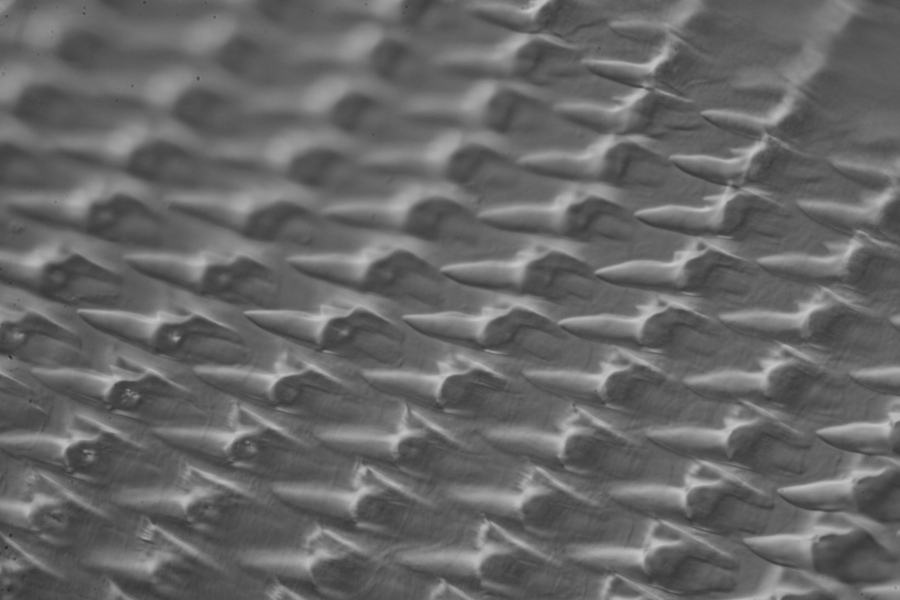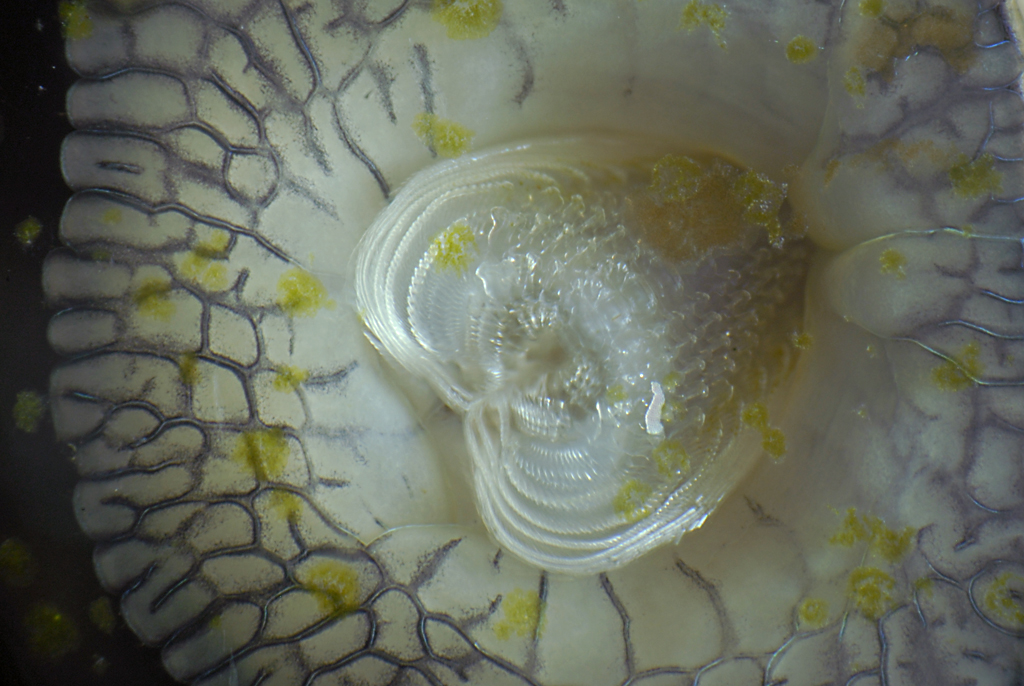
Nutrition
While no specific nutrition habits were found about
Mesodon altivagus,
general nutritional practices of Pulmonates are also apparent in
M. altivagus.
A majority of the Pulmonates eat a wide range of organic matter,
such as plants and leaves, bark, and fungi, such as mushrooms (Dourson,
2010). Calcium carbonate from limestone is also needed in their diet
to carry out necessary body functions, reproducing, and even shell
construction (Dourson, 2010). Additionally, captive
Mesodon snails were able
to survive on lettuce, oats, and even fish food (Örstan, 2006).
Depending on what food was being consumed, snail feeding was found
to last various times, ranging from a couple of minutes to an hour (Dourson,
2010).
In order to obtain their food, the land snails have a specialized
radula used for scraping or rasping bits of food (Dourson, 2010).
The radula is covered with teeth made of chitin that carry the food
particles, with the help of saliva, into the esophagus to begin
digestion (Hotopp et al., 2006).
Digestive juices are then used to begin the breakdown of food into
the gastric pouch, which is connected to the digestive gland that
serves similar functions as the human liver (Hotopp et al.,
2006). Exiting the gastric pouch, the food passes
through the intestine and finally the undigested food is eliminated
through the anal pore (Hotopp et al., 2006).
Microscopic view of the chitinous teeth of a snail radula
View of a snail radula
Similar species in the
Mesodon genus have been observed in their nutritional habits,
such as a 1996 study on
Mesodon normalis. They were observed feeding on bark, lichens,
soil, and especially fungi, such as mushrooms (Foster et al.,
1996).
Occasionally, they were even found eating the decaying bodies of
other animals including millipedes, beetles, and other snails (Foster
et al., 1996).
Comparatively, another study involving
Mesodon thyroidus observed
the preference of food the snail preferred (Wolf et al., 1939). It
was found that M. thyroidus
significantly preferred feeding on fungi instead of the cabbage
or any other specimen that contained chlorophyll (Wolf et al., 1939).
With the close relation between
M. thyroidus,
M. normalis, and M.
altivagus, we can assume that
Mesodon altivagus shares
similar nutritional habits therefore predicting that it is mainly
mycophagous by mainly feeding off of fungal material (Wolf
et al., 1939).
Go Home!

